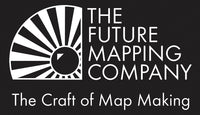The Tube Map
The London UNDERGROUND tube map is instantly recognisable and often copied all over the world. Its visual language is so striking and coherent that it's little wonder it placed second in a BBC survey of the most iconic piece of British design ever, beaten only by Concord.
Early maps of the original underground railway lines were merely city maps with train lines added to them. At that time, the railway lines had different operators who each published a separate map - imagine trying to find your way around using those!
In 1908, the first Underground branded map appeared. It was a joint marketing effort and the first to show the different railway lines together; the root of what we recognise today as the modern tube map.
Harry Beck (1902 – 1974) was an engineering draftsman at the London Underground Signals Office. He began his mapping project on the side, an uncomissioned piece of work which he struggled to sell to his sceptical bosses. They introduced it as a trial pamphlet in 1933 to test it and its instant popularity turned it into the standard map used ever since. 
Allegedly inspired by electrical drawings and, building on existing diagrammatic railway maps, Beck’s idea was to simplify the spaghetti-like lines and straighten them with equally spaced stations, thus showing their relative positions rather than geographical locations.
He was the first to realise that, as most of the routes were underground, it didn’t much matter where the stations were - what mattered was their order and the relevant interchanges.
In his map, lines became horizontal, vertical or with 45 degree angles. Stops were represented by tick marks and the interchanges by a diamond. This enabled him to expand the central area of London, whilst still incorporating outlying stations. His biographer, Ken Garland, calls this the ‘convex lens’ which enabled a clearer view of the dense central area.
But it wasn’t until the 1990’s that London Underground really recognized his contribution and created the Beck gallery at the London Transport Museum to display his works. “This diagram is an evolution of the original design conceived in 1931 by Harry Beck” is printed on all London Underground maps.
London Transport Museum Director Sam Mullins said: “Beck’s map was revolutionary in its simplicity. It has become a London icon and influenced the design of many Metro maps across the globe, as well as being the inspiration for many contemporary artists and designers.”
The London Underground as it appeared originally in 1933, and the updated version for 2016
Another reason the tube map is so recognisable is the use of Johnston Sans - the 1916 typeface is named after its creator and is still used today. Using wide letterforms – the ‘o’s are perfect circles echoing the trademarked roundel logo of the London Underground which, in turn, represents the round tunnels of the tube. Many have also recognised its similarity to Gill Sans, which is unsurprising as Edward Johnston later taught Eric Gill. 
The quirk that makes it truly original is the diamond that replaces the dot on a lower case ‘i’ which was adopted by the designers of the 2012 Olympics who used it to create a link from methods of transport into the Olympic Parks. As with all memorials to people involved with the London Underground Harry Beck’s blue plaque is set in Johnston Sans.
Our love of colour at The Future Mapping Company has been inspired in part by the iconic colours of the tube map. Though they have changed over the years with the improvements of colour and printing technology, retain their Pantone precision and TFL specific names.
Careful with copyright, the tube map has inspired artists & illustrators the world over – the best known probably being The Great Bear by Simon Patterson where tube stations are replaced by the great and the good of modern society. Illustrator Paul Middlewick discovered a menagerie of animals hidden in the tube map, and more recently Transport for Body – a clever map of the human body:

Underskin by Sam Loman



